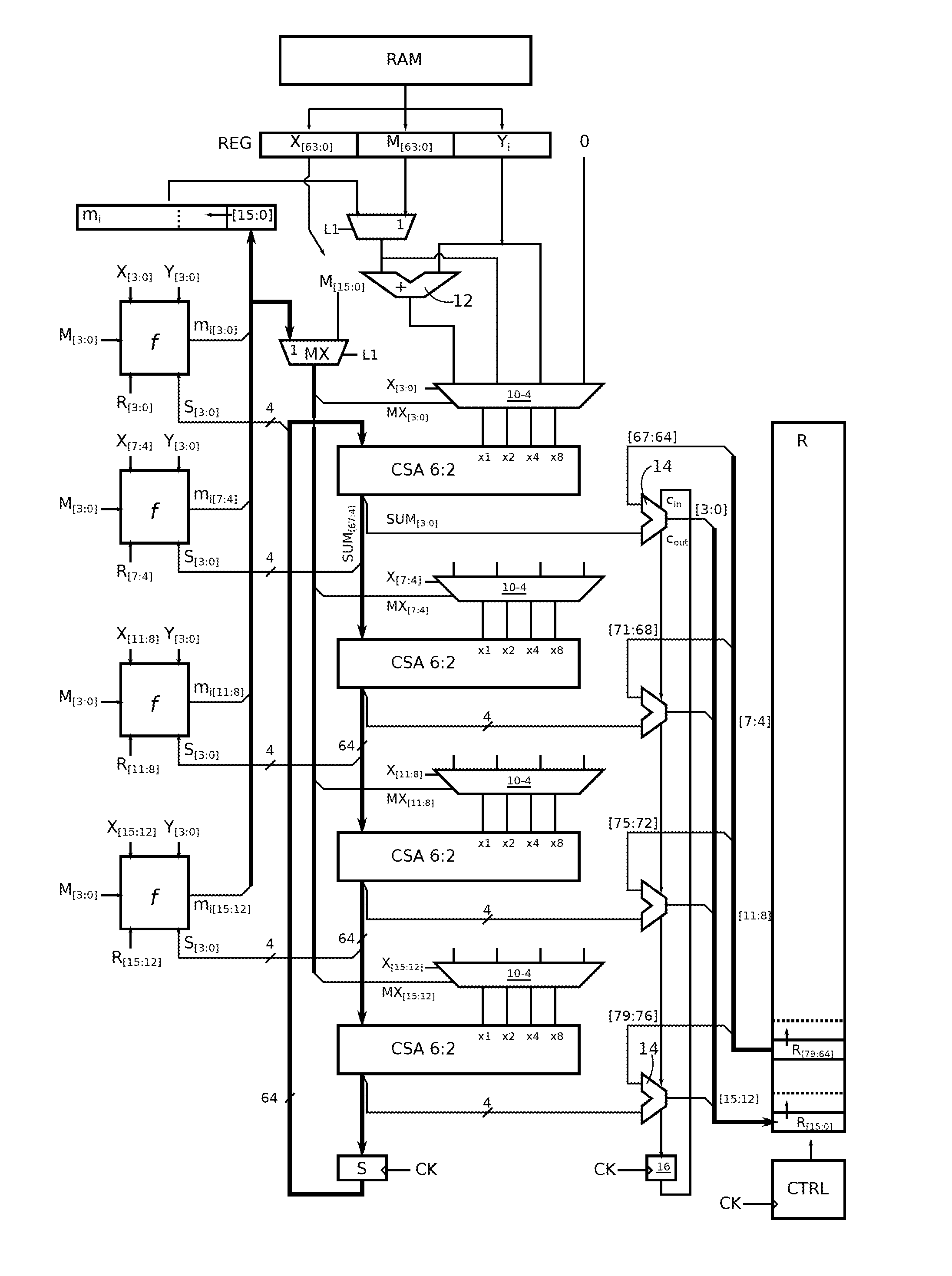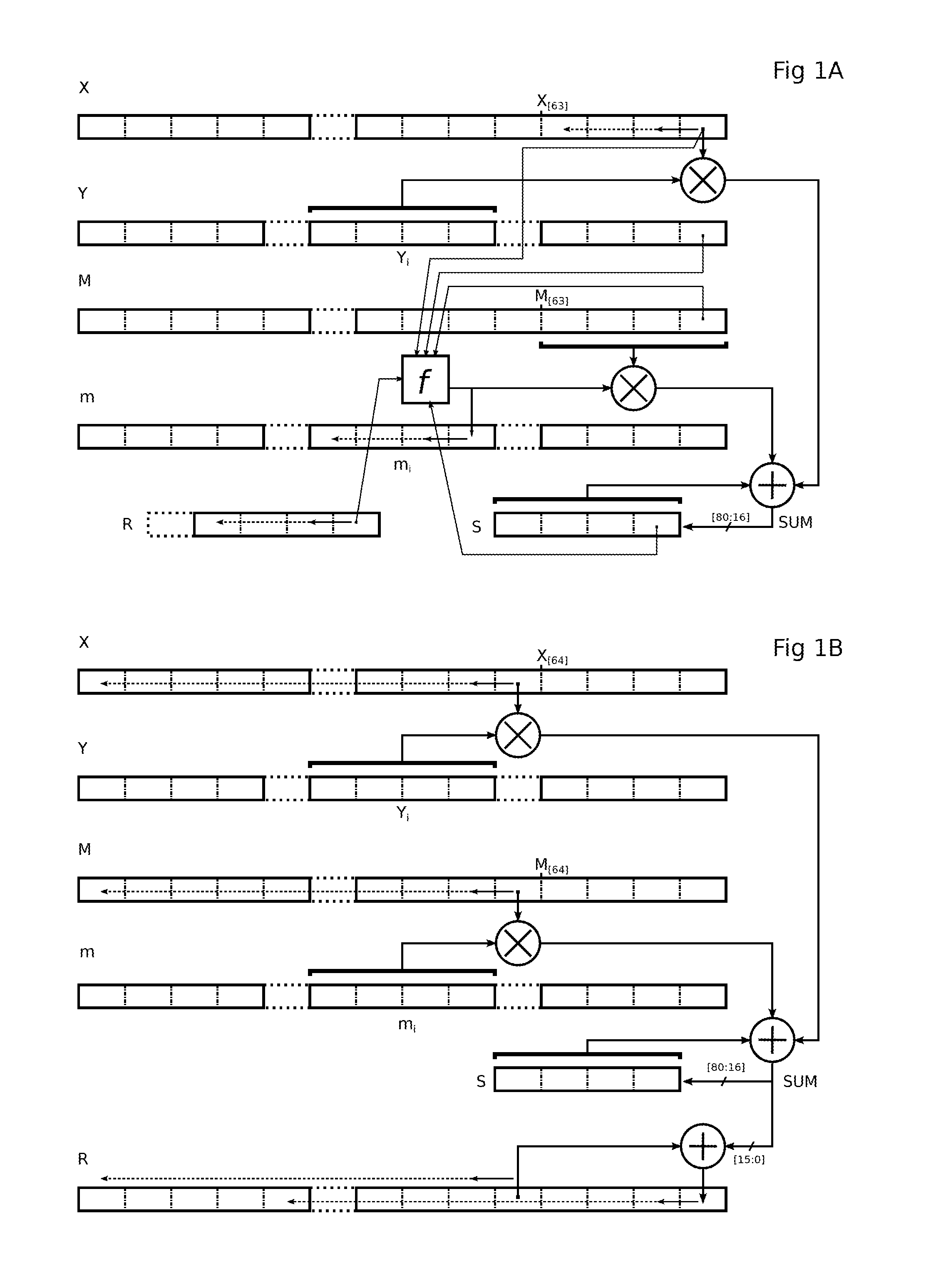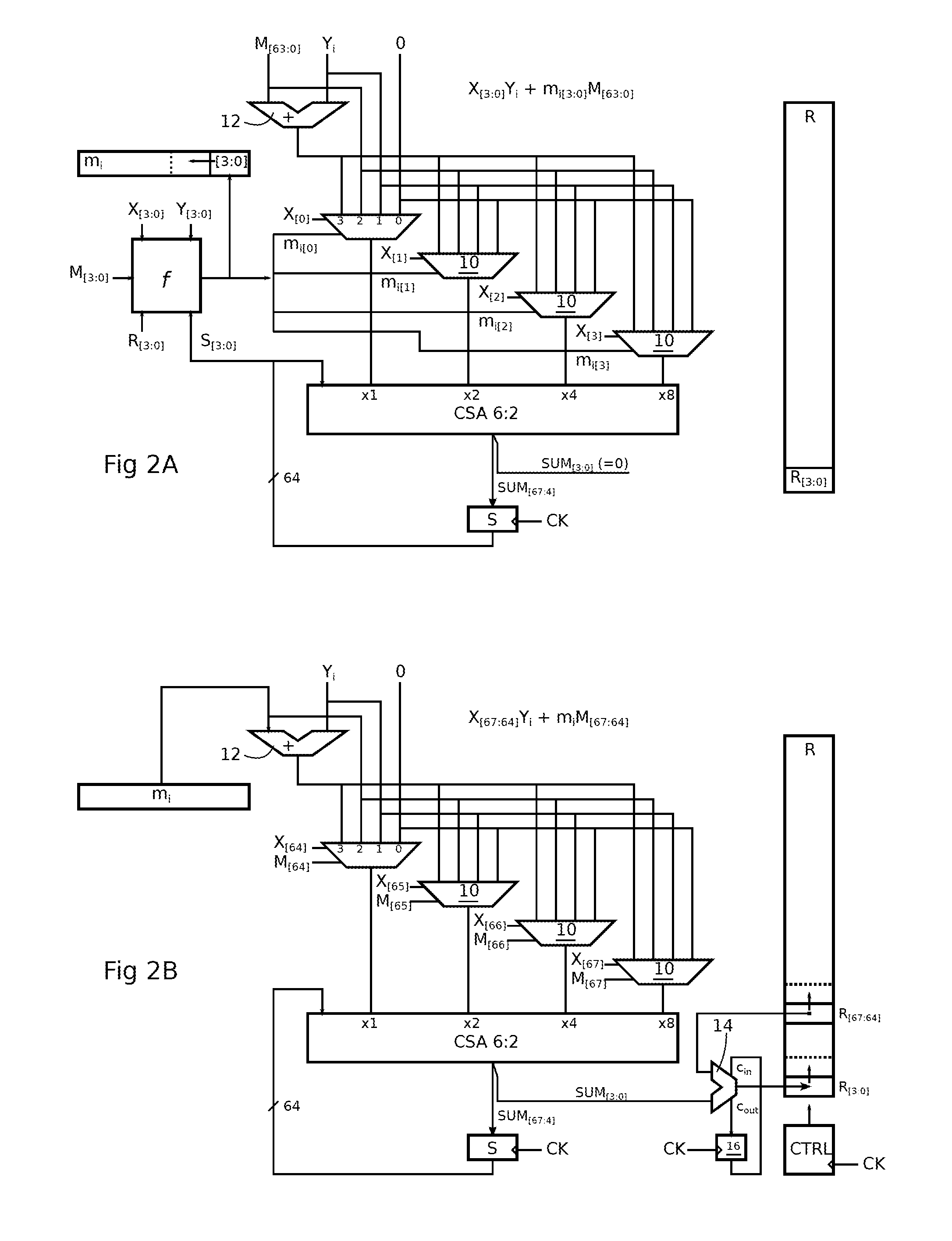Montgomery multiplication circuit
- Summary
- Abstract
- Description
- Claims
- Application Information
AI Technical Summary
Benefits of technology
Problems solved by technology
Method used
Image
Examples
Embodiment Construction
[0040]To accelerate the calculation of a modular multiplication of two numbers whose sizes exceed the computing capacity of the processor, it is wished to improve the efficiency of each intermediate calculation, and to organize the intermediate calculations so that all the cycles of the processor are used.
[0041]The relationship (1) is equivalent to:
R=2−L(XY+mM), (3)
[0042]where m is an L-bit number found such that the L least significant bits of the sum, coded on 2L bits, are null. In other words, R corresponds to the L most significant bits of the sum.
[0043]By developing the iterative calculations of the relationship (2), the following is obtained:
2LR=XY[0]+m[0]M+2(XY[1]+m[1]M)+22(XY[2]+m[2]M)+…+2L-1(XY[L-1]+m[L-1]M),(4)
[0044]and number m of the relationship (3) reveals to be: m=(m[L−1], m[L−2], . . . m[2], m[1], m[0]).
[0045]An intermediate version of this relationship may be rewritten so that one of the operands of each product, which may be referred to as “digit”, has a size k h...
PUM
 Login to View More
Login to View More Abstract
Description
Claims
Application Information
 Login to View More
Login to View More - R&D
- Intellectual Property
- Life Sciences
- Materials
- Tech Scout
- Unparalleled Data Quality
- Higher Quality Content
- 60% Fewer Hallucinations
Browse by: Latest US Patents, China's latest patents, Technical Efficacy Thesaurus, Application Domain, Technology Topic, Popular Technical Reports.
© 2025 PatSnap. All rights reserved.Legal|Privacy policy|Modern Slavery Act Transparency Statement|Sitemap|About US| Contact US: help@patsnap.com



